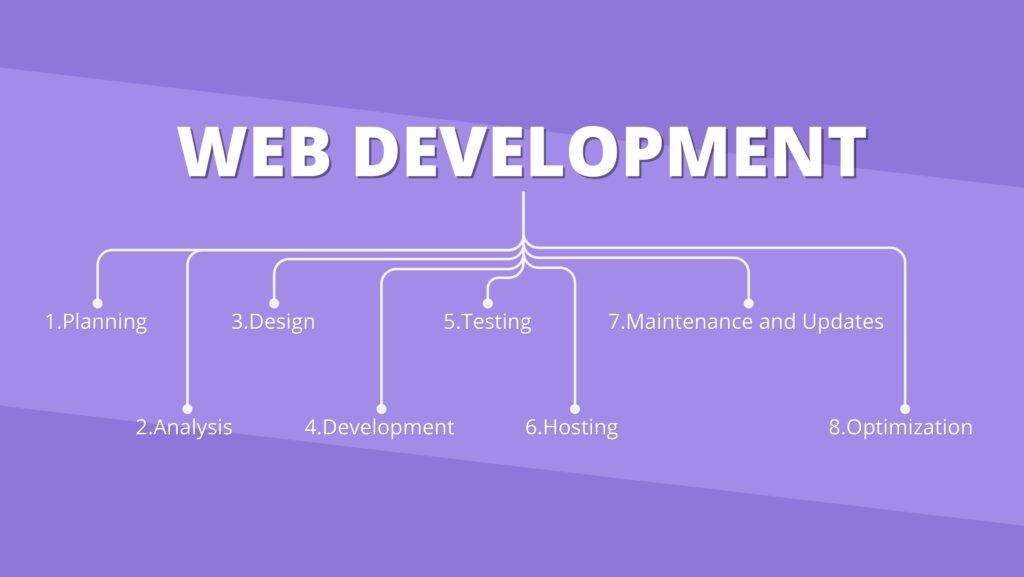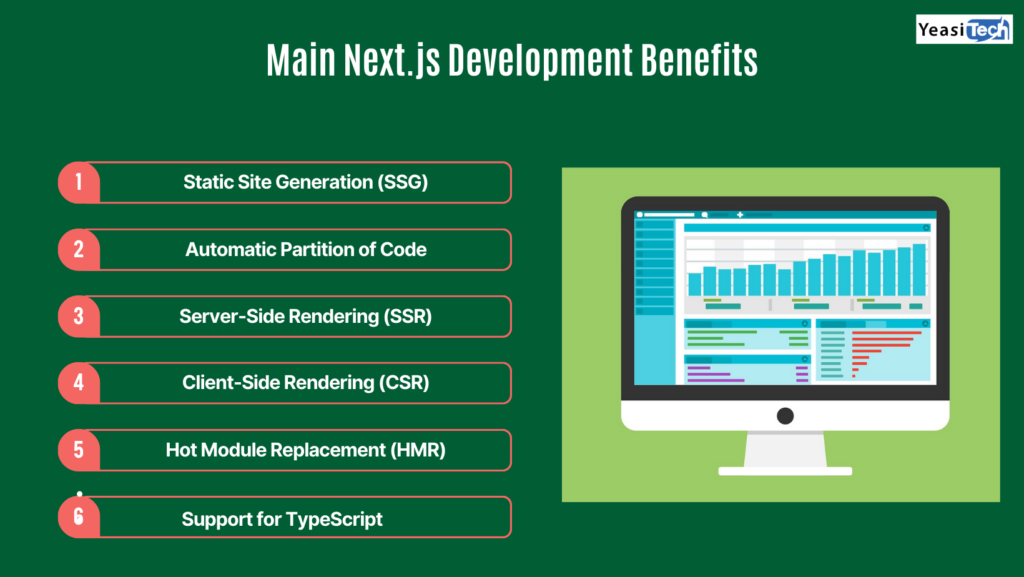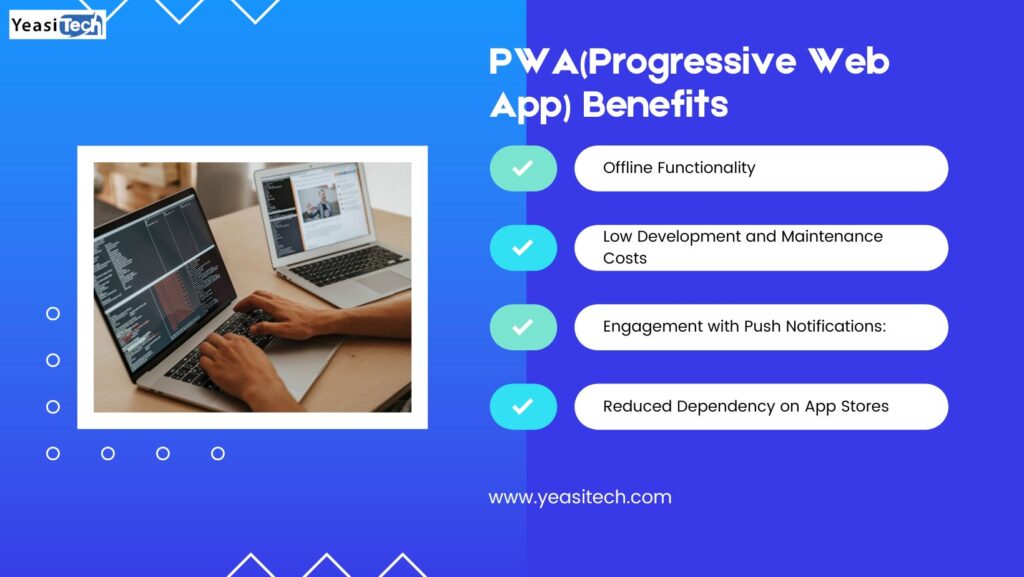Developing a strong online presence in the dynamic world of the internet calls for more than attractive designs. Web development best practices are the foundation of successful website creation because they optimize functionality and performance while also improving the user experience. Key web development best practices will be discussed in this article to assist you in creating websites that capture users and stand out digitally.
Table of Contents
Web Development Best Practices for Success
The implementation of web development best practices is essential to the creation of effective, efficient, and user-friendly websites. Following is a list of important best practices:

Begin with planning
It’s common to believe that planning is a waste of time. But in a more complex sense, planning really makes the process easier overall and prevents errors. Planning will help you stay focused without questioning your next move, keep a project orderly, and reduce the chance of errors.
The first step in developing the best website application is selecting the appropriate technology tools. The selection can be challenging due to the number of web app frameworks, servers, libraries, and programming languages available. Later in this post, we’ll explore further into web development best practices and examine the best available solutions.
Make a visually appealing design
Great design and an easy-to-use interface are essential if you want to draw in new customers. Your app will be much more loved and appreciated if it has carefully planned navigation and easy-to-use features. Keep in mind that your app’s typography, that is, its choice of fonts and colors, should appeal to and engage with your target market.
Offer Exceptional UX
A user-friendly design and in-depth knowledge of the target market will make the development stage much easier. Always keep the intended audience in mind when creating a new online platform or website.
So, remember to continuously test and enhance the user experience (UX) of your app if you want it to succeed. Always pay attention to what your users require. This is essential to the development of productive applications and is one of the best practices for web development.
Guarantee excellent performance and speed
Google reports that a three-second page load time results in a 32% increase in bounce rate. The duration that occurs between a user clicking on a website or opening an app and the point at which all of its contents are accessible for browsing and exploration is known as the load time. If an application or website takes too long to load, there could be several repercussions. Users are far more likely to leave the site or application quickly, which could result in a low Google ranking score.
For any app to be successful, therefore, it must have excellent performance. Many components, including content, website architecture, dynamic elements, and the tech stack, influence how quickly pages load. Following that, it will be essential to continuously test and optimize your web application to shorten page load times.

Ensure the app’s scalability
To be scalable is to be able to build a skyscraper that will never collapse. Make use of cloud hosting, microservices, and modular design to create scalable applications that can manage growing traffic and user demands. You must ensure that your app can manage growing traffic once your audience starts growing. To accomplish this, think about selecting a tech stack that is designed for scaling apps and is capable of adjusting in scenarios where updates or optimizations need to be made. This is essential to the development of productive applications and is one of the best practices for web development.
Maintain the code’s conciseness
One of the most important web development app best practices is code readability. The key to developing creative programs that minimize unnecessary errors is to make sure each code addresses an issue or has a specific aim, like adding a feature to a certain website page. To ensure that future modifications and understanding of your code are not complicated, write concisely. This is especially important if you operate in a team, as teammates will often edit and proofread each other’s work.
It’s also important to understand the significance of code commenting, which is the process of putting one-line, concise annotations throughout your code. These comments make it easy to understand why a piece of code behaves in a particular way or what its intended use is.
Good Navigation system
The route that users can take to obtain information on an app or website is referred to as navigation. Because they are major components of the user experience, navigation bars, and menus rank among the most significant web development best practices. Users are likely to bounce from websites rapidly and change at a poor rate if they are unable to quickly access the information they need or easily navigate back to prior screens or pages.
Compatibility With Different Screen Resolutions
There are many different ways for users to access websites and apps, including via desktop, laptop, tablet, and smartphone devices. Web developers therefore need to make sure that an application or website is flexible and adaptive so that visuals and content may be shown correctly on a variety of devices without warping or disappearing.
To reach a larger audience, make sure to take various mobile screen resolutions and other devices into consideration. Maintain a range of 360 x 640 to 1920 x 1080 to fit various kinds of devices. This is another important web development best practice.
Make use of a strong CMS
You need a tool to assist you with content management because web-based applications need to be updated frequently. Make sure you have access to a robust content management system (CMS) that will enable you to easily alter and change the app’s content. Your capacity to maintain your app more effectively will be greatly enhanced by doing this.
Enhance Your SEO
As modern search engines’ algorithms are always evolving, make sure your web application is always optimized to create a reliable supply of new clients. You simply cannot pass up the opportunity to increase traffic by adhering to SEO principles and putting best practices into effect.
Ensure Security
Security is a top priority and a vital part of software development. Using preventive techniques and best web development practices, security measures should be included in the web app development process. Don’t forget to put measures like role management, data encryption, input validation, and access control into effect.
Approaches and Technologies in Web Development App
As we have discussed web development best practices, let us discuss different approaches and technologies that will help you achieve your goals:
Modular Architecture
Modular architecture provides a special method of combining the best resources and services for particular design requirements. By selecting elements that genuinely connect with your business, you can ensure that your design is not only eye-catching but also distinctive to you, rather than settling for packaged, one-size-fits-all solutions.
Modular architecture is a web and application development technique that builds systems, applications, or webpages using discrete, customized components or modules. While these modules run independently, they can be easily combined to create sophisticated features that make them work well together. The benefits of modular architecture in web development best practices are as follows:
- Automation
- Scalability
- Resource Optimization
- Infrastructure as Code (IaC)
- Adaptability to modern workload
Headless Architecture
The term headless architecture describes an architectural strategy in which a system’s front-end presentation layer and back-end content management and delivery system are separated. Essentially, taking a headless architecture approach is a proactive tactic rather than simply following the latest trend. It allows companies to change quickly and adapt, so they can exceed customer expectations. Let’s now discuss how headless architecture makes web development best practices come to life and its importance:
- Flexibility of Content and dynamic animation
- Excellent UX and Attractive Design
- Utilizing the top headless CMS
- Simpler Integration
- Security
- Optimized SEO
Next.js
Next.js is a well-known open-source web development framework designed by Vercel. It is designed to make web application development easier by providing an extensive framework that makes it easy to create apps and solves the main issues that come with web development. Next.js, a React extension, has grown to be an essential tool for developers looking to maximize productivity without sacrificing quality. Here are the top advantages of how Next.js plays a vital role in web development best practices:
- Static Site Generation (SSG): Static webpages with dynamic features can be made possible by Next.js support for the creation of static HTML files during the construction process. This method can greatly speed up how quickly online pages load.
- Automatic Partition of Code: Only the JavaScript code required for the current page is displayed because of Next.js’ automated partition of the code into smaller parts. Through a reduction in initial page load times, this feature benefits speed optimization.
- Server-Side Rendering (SSR): Before offering the HTML to the client, Next.js enables the server-side rendering of React components. This is excellent for SEO and might enhance the speed at which a page loads immediately.
- Client-Side Rendering (CSR): Next.js offers client-side rendering, in which the initial HTML is generated on the server and subsequent interactions can be handled on the client side, for sites or components where real-time data is important.
- System of Routing:Next.js offers a straightforward and user-friendly file-based routing system. The route architecture is determined by the file and folder structure, which facilitates easy organization and navigation of the program.
- Support for TypeScript:Next.js comes with built-in support for TypeScript, so developers can take advantage of improved tooling and static typing.
- Hot Module Replacement (HMR): Developers can view changes in real-time during development using Next.js support for Hot Module Replacement, removing the need for manual page refreshing.

Node.js
Developers can run JavaScript code server-side with Node.js, an open-source, cross-platform JavaScript runtime environment. The V8 JavaScript runtime engine, which also powers the Google Chrome browser, is the basis upon which it is developed. The main benefits of Node.js in web development best practices are discussed below:
- Around the globe, Node has drawn an engaged and involved development community.
- Node-powered websites employ Google’s V8 JavaScript engine, which makes websites lightweight, quick, and extremely highly productive.
- Node guarantees excellent caching performance. In other words, it keeps information for additional searches.
- Node helps in achieving great scalability without sacrificing performance or acceleration.
- Developing visual and social media channels is possible with its capability for data streaming.
- The reason behind the usage of Node.js by industry titans like Netflix, Uber, Twitter, or PayPal.
React.js
React.js is a fast-growing open-source JavaScript library that is frequently used in the development of websites and web-based applications. Let us provide you with a few of the most important benefits of React.js in web app development best practices:
- According to components that can be reused and the ability to merge HTML with JavaScript, which greatly simplifies the development process, React.js development is fast and inexpensive.
- SEO-friendly and highly performant websites are driven by React.
- Excellent UI and UX are delivered with React development.
- Code stability is guaranteed via React.
- Learning in the library is simpler than in other places.
PWA (Progressive Web Apps)
Specific web-based applications are called progressive web apps. They function without requiring the launch of a browser and can be accessed directly from a device. In addition, PWA apps include offline functionality and push notifications. Even though they function exactly like a mobile app, they are still websites in technological terms—they are only presented in a mobile app format. The main benefits of PWA in web development best practices are discussed below:

- The majority of PWAs implement caching to function offline.
- Compared to native apps, they take up less space and are quicker.
- They work with any web browser, making them universal.
- They work with any web browser, making them universal. This means that they are adaptable to almost any kind of device.
- PWAs assure an instant page load; in fact, they load even two or three times quicker than standard websites.
PWAs are often advised for users who have a tight budget, want to optimize UI/UX and user engagement, want to cover all major platforms with a single codebase, and want to achieve fast time-to-market.
Wrapping Up
In conclusion, we would state that putting the appropriate strategies into practice is far more important. Every organization, no matter how small or large, depends on taking actions that lead to results. Putting the aforementioned advice into practice during web development will guarantee successful results for your company and reduce the possibility of errors.
You can contact us with any questions related to the best web development practices. You can check out our other blogs here.
